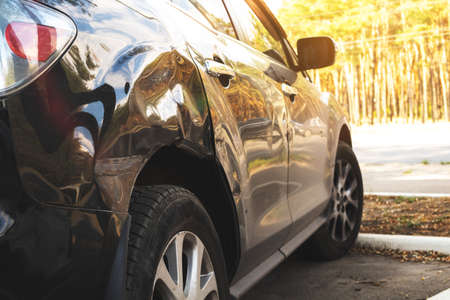1. Skipping Research on Market Prices
Failing to research fair market prices can lead to overpaying. Many buyers walk into a dealership without knowing the actual value of the car they want, which makes it difficult to negotiate effectively. Before heading out, take the time to compare prices of similar models using online tools.
Why Market Research Matters
Car prices can vary depending on location, demand, and dealership policies. By researching ahead of time, you’ll have a strong understanding of a reasonable price and avoid paying too much.
Best Online Tools for Price Research
| Tool | What It Offers |
|---|---|
| Kelley Blue Book (KBB) | Estimates vehicle value based on condition, location, and demand. |
| Edmunds | Provides pricing insights, dealer offers, and expert reviews. |
| Cars.com | Lets you compare prices from multiple dealerships in your area. |
| Autotrader | Offers listings from private sellers and dealers, helping to gauge market pricing. |
How to Use Market Research to Negotiate
- Check prices for the same make, model, year, and trim.
- Look at both dealer and private seller listings to understand the price range.
- Use the data to negotiate confidently, showing the dealer comparable prices.
Walking into a dealership with researched information puts you in control and helps you avoid overpaying for your next car.
2. Focusing Only on Monthly Payments
When buying a car, its easy to focus only on the monthly payment amount. After all, most of us have a budget, and a lower monthly cost seems like a good deal. However, this can be a costly mistake if youre not paying attention to the bigger picture.
Why Its a Problem
Dealers may manipulate loan terms to make monthly payments seem lower while increasing the overall cost of the car. They can do this by:
- Extending the loan term
- Adding hidden fees
- Increasing the interest rate
Example of Monthly Payment Trap
| Loan Term | Monthly Payment | Total Cost Paid |
|---|---|---|
| 36 months | $500 | $18,000 |
| 60 months | $350 | $21,000 |
| 72 months | $300 | $24,000 |
In this example, a longer loan term lowers the monthly payment but increases the total cost paid over time. The extra interest adds up, and you could end up paying thousands more for the same car.
How to Avoid This Mistake
Negotiate the Total Price First
Instead of focusing only on the monthly payment, always negotiate the total purchase price of the car first. This ensures you get the best deal without hidden costs.
Look at the Loan Terms
Make sure you check the interest rate and loan duration. A shorter loan term may mean higher monthly payments, but it can save you money in the long run.
Consider Financing Options
Compare financing from banks and credit unions before accepting dealer financing. This can help you get a better interest rate and save money.
By focusing on the total cost of the car instead of just the monthly payment, youll avoid overpaying and make a smarter financial decision.
![]()
3. Three, Not Getting Pre-Approved for Financing
Walking into a dealership without pre-approved financing gives them leverage. If you dont have a loan offer in hand, the dealer has more control over the financing terms, and you may end up paying higher interest rates or agreeing to terms that arent in your best interest.
Why Pre-Approval is Crucial
Getting pre-approved for a loan from a bank or a credit union allows you to understand how much you can afford and what interest rate you qualify for. It helps you set budget limits before you start negotiating with the dealership. Plus, having pre-approval puts you in a stronger position to negotiate because the dealer knows you have other options.
How to Get Pre-Approved
- Check your credit score to get an idea of what rates you might qualify for.
- Shop around for the best loan terms from different banks, credit unions, or online lenders.
- Apply for pre-approval with a financial institution that offers the lowest interest rates.
- Bring your pre-approval documents to the dealership when you’re ready to buy.
Pre-Approval vs. Dealer Financing
| Pre-Approved Loan | Dealer Financing |
|---|---|
| You know your interest rate and loan terms upfront. | Dealer may offer higher interest rates to increase profit. |
| Gives you negotiation power when discussing vehicle price. | Dealer may focus more on monthly payments than the total cost. |
| Allows you to compare multiple loan offers. | Dealership financing might have limited options. |
Final Tip
Always go into a dealership with financing secured. Even if the dealer offers a loan, you can compare it with your pre-approved offer to see which deal is better. This way, you stay in control of your car purchase.
4. Ignoring Additional Fees and Add-Ons
When buying a car, it’s easy to focus only on the sticker price and forget about additional fees and dealer add-ons. However, these extra costs can add up quickly, turning what seemed like a great deal into a much more expensive purchase. To ensure youre not overpaying, you need to carefully review the final contract before signing.
Be Aware of Common Dealer Add-Ons
Dealerships often offer various add-ons that might not be necessary for every buyer. Some of these extras are useful, while others are simply designed to boost the dealerships profit. Here are some common add-ons to watch out for:
| Add-On | What It Is | Is It Necessary? |
|---|---|---|
| Extended Warranty | An additional warranty covering repairs after the manufacturer’s warranty expires. | Depends on your needs, but often unnecessary for new cars with a strong manufacturer warranty. |
| VIN Etching | Engraving the VIN onto windows as a theft deterrent. | Can be useful but often overpriced and not always effective. |
| Fabric Protection | A special coating applied to the car’s upholstery to prevent stains. | Usually unnecessary since you can buy fabric protectant spray yourself. |
| Rustproofing | Special protective coating to prevent corrosion on the vehicle. | Not needed for most modern cars as they already have anti-corrosion treatments. |
Check for Unnecessary Fees
Beyond add-ons, dealerships may include various fees that can increase the overall cost. While some fees are legitimate, others may be avoidable or negotiable:
- Dealer Preparation Fee: Some dealers charge a fee for “preparing” the car, which should already be included in the price.
- Documentation Fee: This covers paperwork processing and may vary by state, but excessive fees can be negotiated.
- Advertising Fee: Some dealers pass their advertising costs onto customers—this is often negotiable.
How to Avoid Overpaying
To protect yourself from unnecessary costs, always ask the dealer for a breakdown of all fees and add-ons before finalizing your purchase. If the contract includes something you don’t understand, don’t hesitate to ask. You should:
- Carefully review the contract before signing.
- Decline any add-ons you don’t need.
- Negotiate or request the removal of excessive fees.
- Compare final pricing with other dealerships.
By staying informed about additional costs, you can ensure youre not paying more than necessary for your new car.
5. Five. Skipping a Test Drive and Inspection
Never buy a car without test driving it and, for used cars, getting a professional inspection to avoid unexpected issues. Skipping these steps could lead to costly problems down the road.
Why Test Driving Is a Must
A car might look perfect on paper, but how it feels on the road is what really matters. Test drives help you assess:
- Comfort: Are the seats supportive? Is there enough legroom?
- Visibility: Can you see clearly from all mirrors and windows?
- Performance: How does the acceleration, braking, and steering feel?
- Noise Levels: Is the engine too loud? Are there strange sounds?
- Technology and Features: Do all systems work as expected?
Why Used Cars Need a Professional Inspection
While test driving helps you gauge comfort and handling, a professional inspection ensures the car has no hidden issues. Mechanics can spot problems you might miss, such as:
| Part | Potential Issue |
|---|---|
| Engine | Leaks, unusual noises, oil issues |
| Transmission | Slipping gears, delayed shifts |
| Brakes | Worn-out pads, spongy pedal |
| Suspension | Uneven tire wear, poor handling |
| Frame | Previous accident damage |
How to Arrange an Inspection
For used cars, follow these steps to ensure a proper inspection:
- Choose a trusted independent mechanic or a certified auto shop.
- Request a pre-purchase inspection before committing.
- Review the mechanics report and use it to negotiate if issues are found.
- Walk away if the seller refuses an inspection—this is a red flag.
Red Flags During a Test Drive
Pay attention to these warning signs when test driving:
- Strange Noises: Clicking, knocking, or whining sounds.
- Poor Braking: Delayed response, grinding noises.
- Rough Idle: Unsteady engine performance at a stop.
- Warning Lights: Check engine, ABS, or airbag lights staying on.
- Transmission Hesitations: Delayed shifting, jerking motions.
Final Tip: Don’t Rush the Process
Taking time to test drive and inspect a car can save you from expensive repairs and regret. Whether new or used, these steps are crucial to ensuring you make a smart purchase.

